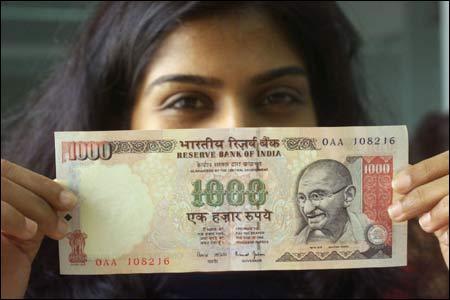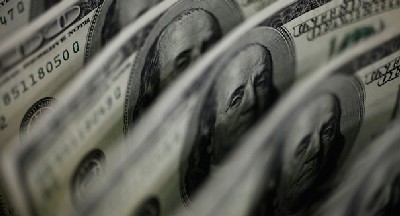 | « Back to article | Print this article |
Rupee fall: How it has changed currency traders' lives
Though Santosh Shetty is furiously punching away on his keyboard, his eyes are locked on the terminal.
The life of this senior currency trader at Alpari India, a foreign exchange firm, has completely changed in the last six months.
With the rupee falling 20 per cent since June 30, the Reserve Bank of India first intervened, and later introduced policy measures to control the outflow and improve dollar liquidity.
"We have to give clients trading calls within a couple of seconds to take advantage of arbitrage opportunities," Shetty says.
Click NEXT to read on . . .
Rupee fall: How it has changed currency traders' lives
Though nimble fingers and wit help keep his hectic job interesting, even an industry veteran like him admits the recent fluctuation has caught traders quite unaware, and giving trading calls to clients has become much more difficult.
The twin trading terminals of the National Stock Exchange (NSE) and the MCX Stock Exchange, flashing real time fluctuations in the dollar-rupee exchange grab attention almost immediately.
The blue and red blinkers, highlighting the respective upward and downward movements in the spot and futures rates of tradable currency pairs allow dealers to take decisions in seconds.
There are 'candlesticks' and 'parabolic graphs' on the terminals that show both bullish and bearish sentiments in the currencies.
Click NEXT to read on . . .
Rupee fall: How it has changed currency traders' lives
"There is a strong correlation between the movement of the graphs and the performance of the domestic stock market and subsequently, the impact on rupee-dollar pair. Hence, it is not just a single figure we look at, but an amalgam of factors," says another dealer.
Using these terminals, dealers are busy chatting with clients, making bookings or squaring off positions. While Shetty explains the working of the terminals, he simultaneously books trades at record speed. We see him chatting frequently with the clients on Yahoo! messenger. And, he is constantly on the phone.
"We have seldom seen such volatility in the rupee. There is a great opportunity for trading, but we are cautious now, and are not carrying our positions overnight," says another trader, while keeping a track of both the trading terminal and the news on television.
Click NEXT to read on . . .
Rupee fall: How it has changed currency traders' lives
The real action, traders say, starts after 1.30 pm, when the European market opens. The scope for jobbing increases on account of the rupee's movement, which becomes predictable, as it tracks the euro quite closely.
However, from 3 pm, dealers gear up to square-off their open trades, as the market becomes less predictable after 3:30 pm and it is risky to hold positions overnight these days.
"The trading hours may come to an end, but for us the work goes on forever, as the US market never shuts. We need to track how the market behaves to be geared up for the next day," Shetty says.
On a bad day, and there have been many in the last six months, it becomes difficult to convince clients. "But traders have to ensure the client exits on time," Shetty says, as he asks a client to sell his trading lot. The futures market is not for holding on positions for long.
Click NEXT to read on . . .
Rupee fall: How it has changed currency traders' lives
Shetty's job is hectic. His work starts at 8.30 am, as he has to send technical reports on the currency and reports on global markets to clients before the market opens to help them decide their strategy.
And, even after the hectic trading session, he has to discuss the strategy for the next day. He finally leaves work at 7 pm, after almost 11 hours.
Our conversation suddenly comes to a stop, as someone in the trading team comes and excitedly says, "Teen lakh ban gaye das minute mein (Rs 3 lakh made in 10 minutes)." Maybe this is what keeps Shetty and his team going.





